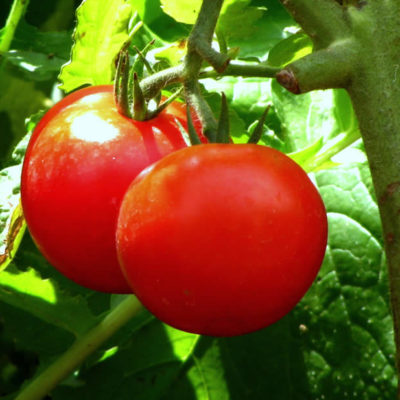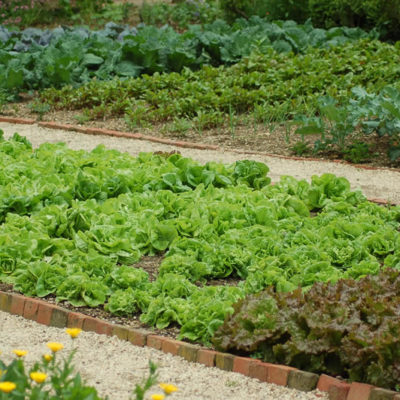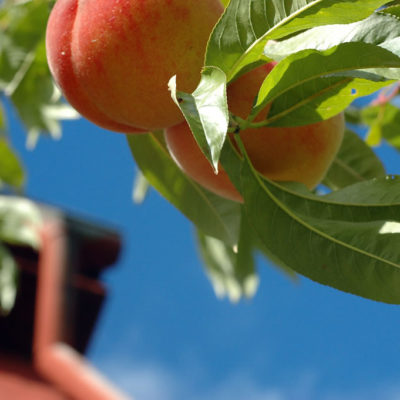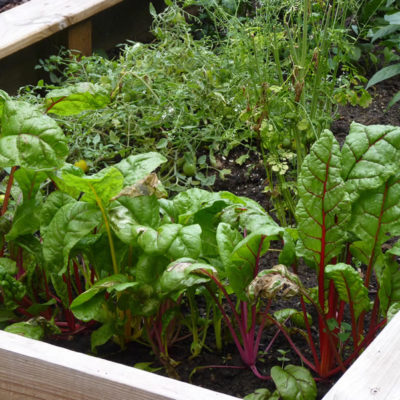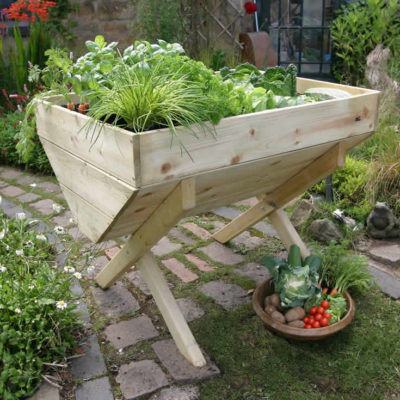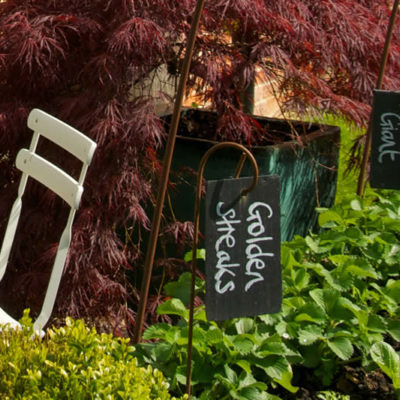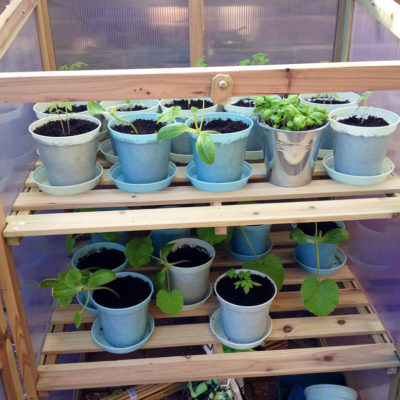Growing Vegetables – Design Considerations
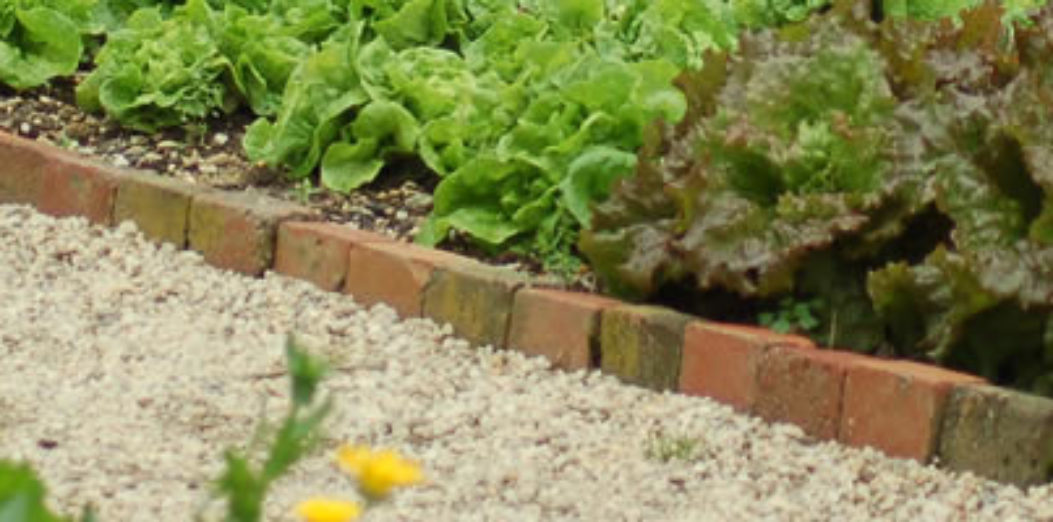
This is the second of a series of design blogs aimed at encouraging people to make space to grow vegetables (see July’s introductory post here). This time a few pointers on what to think about when planning a vegetable garden.
Key considerations when designing a vegetable garden
- How enthusiastic are you? Do you just want to grow a few tomatoes or runner beans in a small bed (or maybe just a few containers) somewhere in the garden? Or are your plans somewhat grander, requiring more space and a dedicated “veggie garden”?
- What – specifically – do you want to grow? Salad crops? Green Vegetables? Brassicas? Potatoes and other root vegetables? Fruit? Perennial crops such as asparagus or rhubarb? Herbs? More tender fruit and vegetables? Each of these has different requirements in terms of climate, soil etc. If you want to grow lots of different things on a permanent basis, then some form of bed system, and perhaps crop rotation would be advisable.
- How physically able are you? Vegetable growing can be hard work. Would raised beds (not too wide for ease of access) with paths in between make life easier? Might access be an issue – do you need wider paths? Should the veggies be located closer to the house so that you don’t need a hike down the garden just to pick a few runner beans or courgettes?
Location, location, location…
Where is the best place in your garden to grow vegetables? This is a critical question. Ideally the vegetable garden needs:
- An open site with plenty of light and sunshine
- To be sheltered from strong winds
- A well drained, fertile soil, rich in organic matter (and ideally with a very mildly acid pH value)
- A very hot area or suntrap somewhere if you want to grow tender fruit and vegetables (peaches for example)
- Easy access to taps for watering
- Locating sheds, compost areas, and the greenhouse close by might also be useful (if, of course, you want a greenhouse).
Areas to be avoided:
- Those under tall overhanging trees, which cast shade and prevent both rain and sunlight reaching crops
- Exposed windy sites
- Poorly drained, boggy soils prone to waterlogging
- Very light soils where water and nutrients are easily washed out
- Excessively acid or alkaline soils
- Frost pockets
It is, of course, possible – to some degree – to alter conditions within a garden in order to suit vegetables better. Windbreaks can be installed to filter the wind. And most importantly, many people opt to grow their vegetables in raised beds as this not only can make life easier physically (e.g. no digging heavy clay soils), it also means that there is much better border drainage and provides the ability to control the quality and fertility of soil within the beds.
Other Design Considerations
- Do you want your vegetables to be tucked away out of site, or in full view. If the latter, might it be possible to incorporate them more into the design of the overall garden e.g. perhaps growing the vegetables in a small formal garden or potager with a central feature (e.g. bird bath).
- Might some seating be nice – perhaps a bench to sit with a cup of tea or coffee?
- Do you need power? To a greenhouse? For lighting? For any tools?
- Does the vegetable garden need any protection – from deer, rabbits, squirrels, mice or just the household pets?
Just a few things to consider when planning a space for vegetables… Coming Up Soon: A vegetable garden design case study or two – putting the clues above into practice, ideas for what to grow, and some practicalities when it comes to getting your hands dirty!
Photo credits: Ketzirah Lesser & Art Drauglis, Ajith Kumar, Kate Ter Haar, Joopey, normanack, Ofer El-Hashahar, Winniepix, Isabell Schulz.
